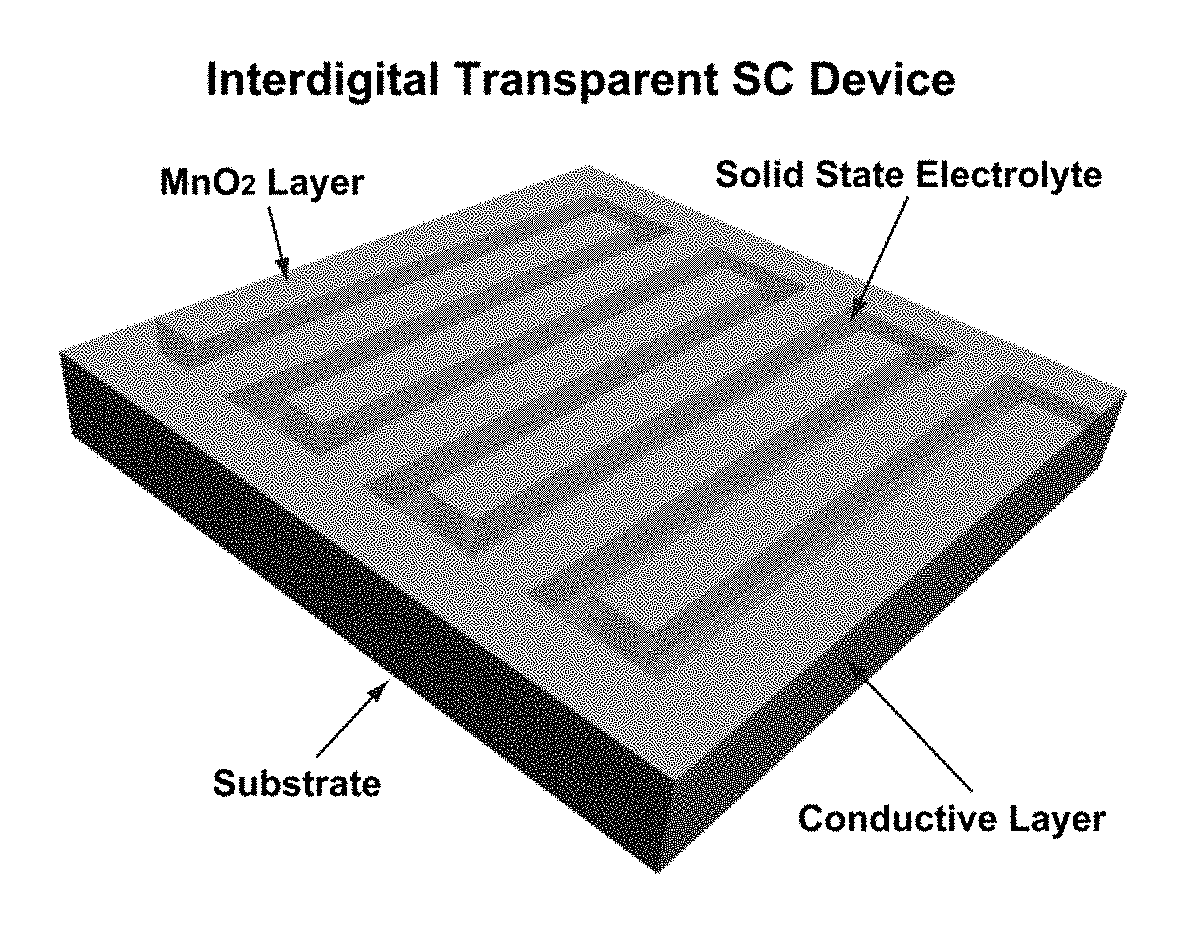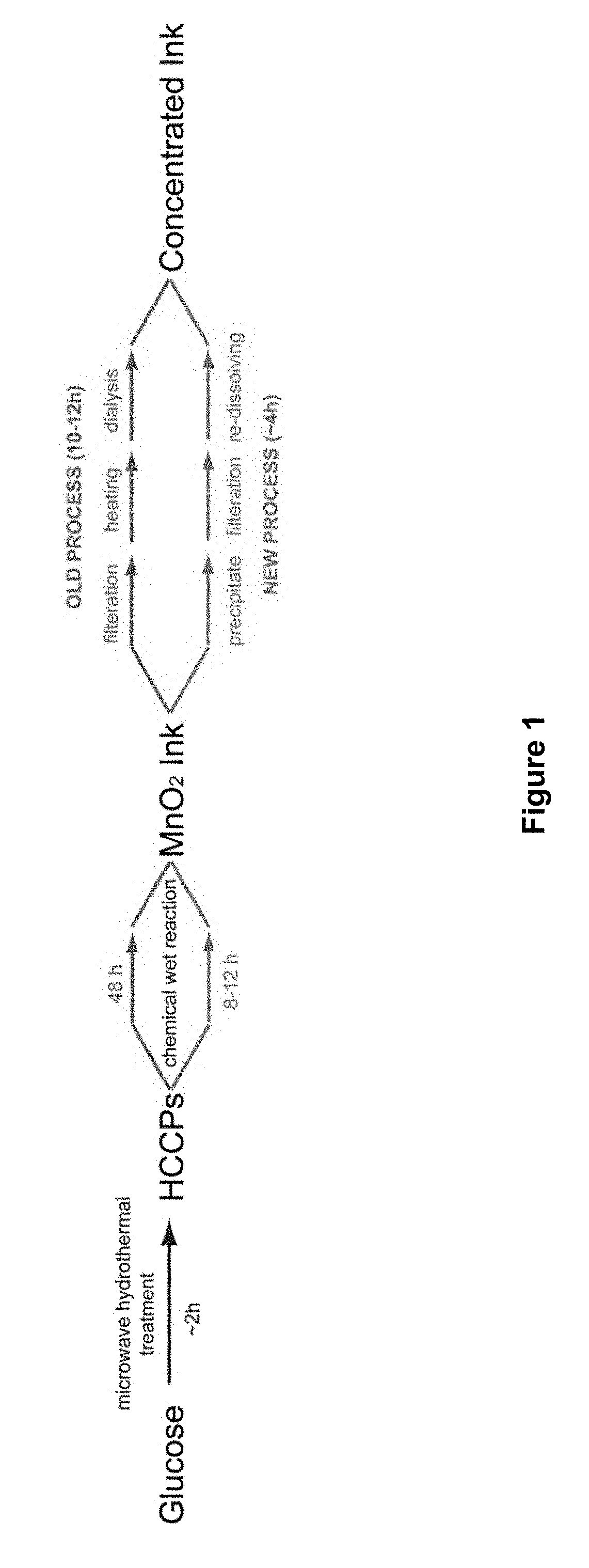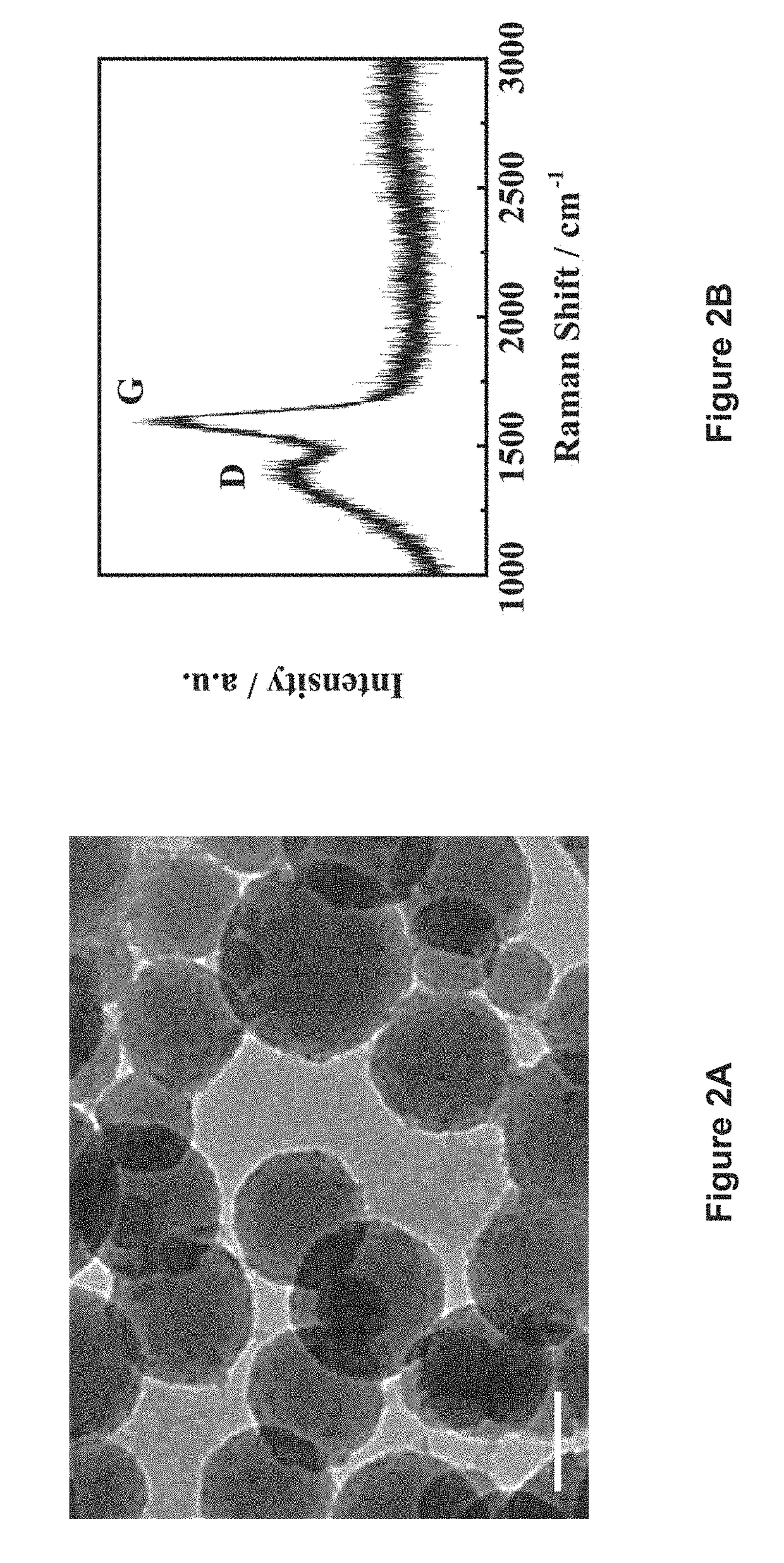Method for preparing aqueous mno2 ink and capacitive energy storage devices comprising mno2
a capacitive energy storage and manganese dioxide technology, applied in hybrid capacitor electrodes, hybrid capacitor electrolytes, hybrid/edl manufacture, etc., can solve the problem of unmet demand for sc devices
- Summary
- Abstract
- Description
- Claims
- Application Information
AI Technical Summary
Benefits of technology
Problems solved by technology
Method used
Image
Examples
example 1
on of MnO2 Ink and Characterization
[0064]A glass tube filled with 10 wt % glucose solution was irradiated with a microwave system as described in L. Tang et al. (ACS Nano 2012, 6, 5102-5110) at 350 psi and 250° C. for 5 min, to form a suspension containing highly crystalline carbon particles (HCCPs). The suspension was poured out for filtration. The HCCPs residues were re-dissolved into water and sonicated to form a 0.1 mg·mL−1 HCCPs suspension. Subsequently, 16 mg·mL−1 KMnO4 solution was added into the HCCPs suspension dropwise under continuous stirring and maintained at 45° C. for 9 h. The resultant suspension was then heated to 75° C. under stirring for 1 h. After cooling to room temperature, the suspension was filtered by using filter paper (pore size: 15-20 μm) to remove the excess reactants to obtain a MnO2 ink. Pure ethanol was added to the as-obtained MnO2 ink until precipitates were observed. The MnO2 suspension was centrifuged at 4000 rpm, followed by vacuum filtration usi...
example 2
on of Electrochemical Performance of MnO2 Symmetric Supercapacitor with Ionic Liquids
[0070](“CE” represents Comparative Experimental Example)
Preparation of SCNTs Paper (“CE-A”)
[0071]As a first step, an ink is formed by allowing CNTs grown by laser ablation and sodium dodecylbenzenesulfonate (SDBS, Sigma-Aldrich) to be dispersed in deionized water. Their concentrations were 10 and 1-5 mg / mL, respectively. After bath sonication for 5 min, the CNT dispersion was probe-sonicated for 30 min at 200 W (VC 505; Sonics) to form an ink. Meyer rods (Rdspecialties) were used to coat the CNT ink onto Xerox paper. Subsequently, conductive paper is prepared as follows. For Meyer rod coating of CNT films, CNT ink was dropped onto the paper surface. Then, the rod was rolled to the other end of the paper (Xerox). The thickness of the dried CNT film could be controlled by the ink concentration and the wire size of the Meyer rods.
Preparation of Graphene / MnO2 Composite (“CE-B”)
[0072]Ni foam was used to ...
PUM
 Login to View More
Login to View More Abstract
Description
Claims
Application Information
 Login to View More
Login to View More - R&D
- Intellectual Property
- Life Sciences
- Materials
- Tech Scout
- Unparalleled Data Quality
- Higher Quality Content
- 60% Fewer Hallucinations
Browse by: Latest US Patents, China's latest patents, Technical Efficacy Thesaurus, Application Domain, Technology Topic, Popular Technical Reports.
© 2025 PatSnap. All rights reserved.Legal|Privacy policy|Modern Slavery Act Transparency Statement|Sitemap|About US| Contact US: help@patsnap.com



